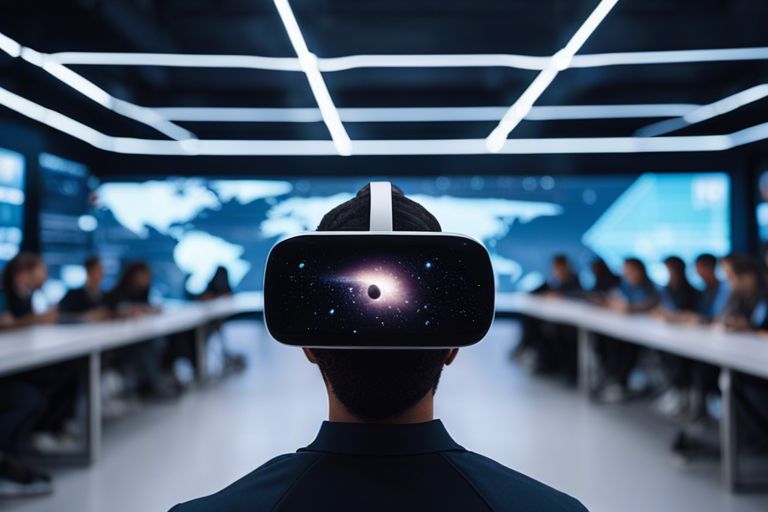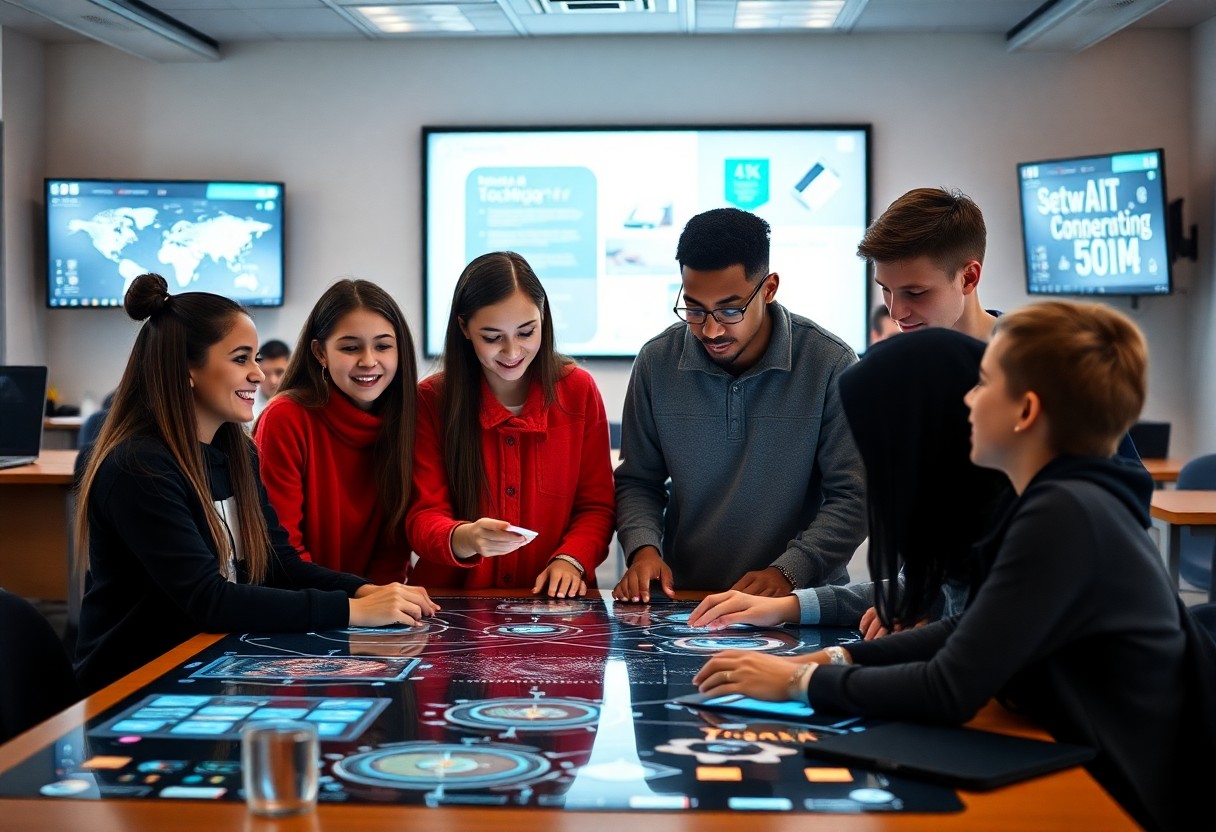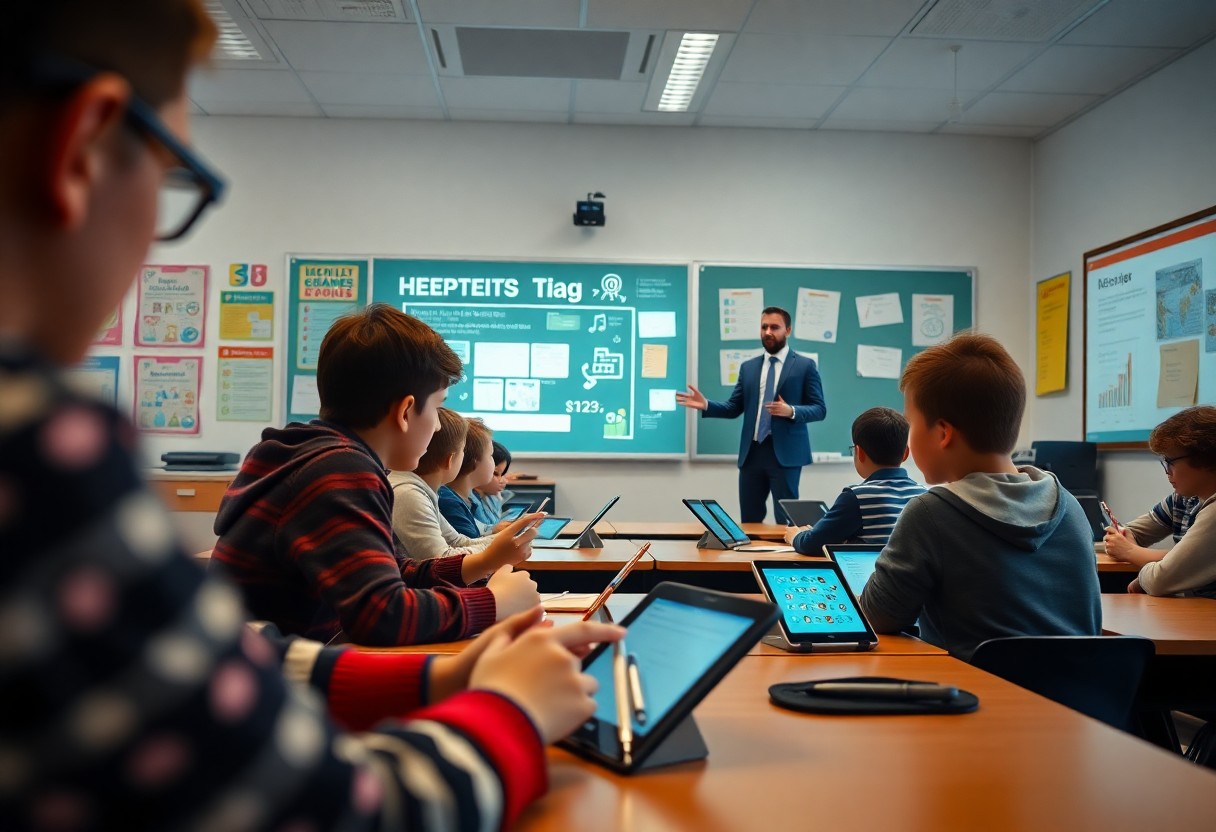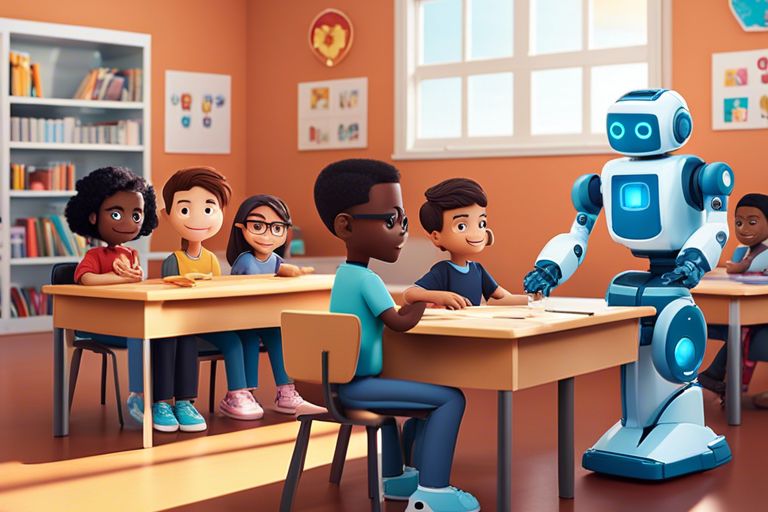You are about to begin on a journey that will transform the way we learn. The exciting possibilities of Virtual Reality are revolutionizing education, bringing lessons to life in immersive and interactive ways. Imagine stepping into historical events, exploring the depths of the ocean, or even dissecting a virtual frog without the mess. VR technology holds the potential to enhance understanding, engagement, and retention like never before. Join us as we probe into the intriguing future of education with Virtual Reality.
The Current State of Education
To truly understand the impact of virtual reality in education, we must first examine the current state of traditional teaching methods.
Limitations of Traditional Teaching Methods
While traditional methods have been the foundation of education for centuries, they come with inherent limitations. One significant drawback is the passive learning experience that often accompanies traditional teaching methods. Students sit in classrooms, listening to lectures, reading textbooks, and taking notes without much interaction or engagement. This can lead to boredom, disinterest, and limited retention of information. Another limitation is the one-size-fits-all approach where teachers deliver the same material to an entire class, regardless of individual learning styles or paces. This can leave some students struggling to keep up while others grow bored waiting for their peers to catch up.
The Need for Innovation in Learning
Education is at a critical juncture where innovation is no longer just a nice-to-have but a necessity. The world is rapidly evolving, and so too must our approach to learning. Virtual reality presents an opportunity to revolutionize education by providing immersive, interactive, and personalized learning experiences. Imagine students being able to travel back in time to witness historical events, explore the surface of Mars, or conduct virtual science experiments in a safe and controlled environment. This kind of experiential learning can enhance understanding, retention, and engagement in ways that traditional methods simply cannot match.
For instance, virtual reality can cater to different learning styles, such as visual, auditory, or kinesthetic, by offering a variety of experiences to suit individual preferences. It can also bridge the gap between theory and practice by allowing students to apply concepts in real-world scenarios. Additionally, virtual reality can create a more inclusive learning environment by accommodating students with diverse needs and abilities. By embracing innovation in learning, we have the opportunity to equip the next generation with the skills, knowledge, and mindset needed to thrive in an ever-changing world.
The Rise of Virtual Reality
It is no secret that virtual reality (VR) has taken the world by storm in recent years, transforming various industries and pushing the boundaries of what is possible. When considering education, VR has the potential to revolutionize the way we learn and interact with information, making it a truly immersive and engaging experience.
A Brief History of VR Technology
Reality Virtual reality technology has been evolving for decades, with its roots dating back to the 1960s. The concept of VR has always been to create a simulated environment that feels real to the user, achieved through the use of advanced hardware and software. Over the years, VR technology has made significant strides in improving graphics, motion tracking, and overall user experience, making it more accessible and realistic than ever before.
Recent Advancements and Breakthroughs
Technology Recent advancements in VR technology have opened up a world of possibilities for education. From interactive simulations and virtual field trips to hands-on experiences in biology labs or historic landmarks, VR has the potential to bring learning to life in ways never seen before. This level of immersion and engagement can greatly enhance the learning process, making it more engaging and memorable for students.
For instance, the introduction of standalone VR headsets has made it easier for schools to adopt VR technology without the need for expensive equipment or complex setups. This accessibility has enabled more educators to integrate VR into their teaching methods, enhancing the overall learning experience for students.
The Potential of VR in Education
Enhanced Engagement and Interaction
The potential of Virtual Reality (VR) in education is immense. One of the key areas where VR stands out is in enhancing engagement and interaction among students. By immersing them in a 3D virtual environment, students can experience learning in a whole new way – they can walk through historical sites, explore the human body from within, or even travel to outer space. This hands-on approach to learning not only captures students’ attention but also increases retention rates as compared to traditional methods.
Personalized Learning Experiences
Any significant benefit of VR in education is the ability to provide personalized learning experiences. Through VR technology, educators can tailor lessons according to each student’s learning pace and style. This customization ensures that students are fully engaged and challenged at their individual level, leading to improved academic performance and enhanced problem-solving skills.
Understanding each student’s strengths and weaknesses allows educators to create targeted lessons that cater to their specific needs. This tailored approach not only boosts student confidence but also encourages a love for learning as students are more likely to succeed when they feel supported and understood.
Immersive Learning Environments
Simulation-Based Learning
After experiencing the wonders of virtual reality (VR) technology, educators are exploring the potential simulation-based learning offers. Immersive environments allow students to engage with realistic scenarios, such as medical simulations, scientific experiments, and historical events, in a safe and controlled setting. This interactive approach enhances retention and understanding by providing hands-on experiences that traditional learning methods cannot match.
Virtual Field Trips and Expeditions
Simulation-Based Education is paving the way for virtual field trips and expeditions that transport students beyond the confines of the classroom. Through VR headsets, learners can probe the depths of the ocean, soar through space, or explore ancient civilizations, all without leaving their seats. These virtual experiences not only ignite curiosity and excitement but also promote empathy and global awareness by immersing students in diverse cultures and environments.
Field trips to inaccessible or prohibitively expensive locations become feasible, allowing students to explore places they may never have the opportunity to visit in real life. This opens up a world of possibilities for educators, giving them the tools to create unforgettable learning experiences that transcend traditional boundaries.
Interactive 3D Models and Visualizations
Once again, Virtual Reality (VR) proves to be a game-changer in education through interactive 3D models and visualizations. By immersing students in a three-dimensional learning environment, VR technology offers a hands-on approach that enhances understanding and retention of complex concepts.
Enhancing STEM Education
Models in virtual reality can revolutionize STEM (Science, Technology, Engineering, and Mathematics) education by allowing students to explore intricate molecules, dissect virtual organisms, or manipulate physics simulations in ways previously impossible. The ability to interact with and manipulate 3D models enhances engagement and comprehension, making STEM subjects more accessible and exciting for learners of all ages.
Bringing Complex Concepts to Life
Complex scientific principles or abstract theories can be challenging to grasp through traditional teaching methods. However, with VR’s capability to create immersive and interactive experiences, educators can bring these complex concepts to life in a tangible and engaging manner. Students can visualize the inner workings of atoms, witness historical events firsthand, or even explore distant planets, fostering a deeper understanding and appreciation for the subject matter.
The utilization of VR technology to bring complex concepts to life not only makes learning more enjoyable but also encourages critical thinking and problem-solving skills. Students can actively participate in their education, paving the way for a more interactive and personalized learning experience.
Virtual Reality in Soft Skills Training
Developing Emotional Intelligence and Empathy
Keep in mind that virtual reality can play a significant role in helping individuals develop emotional intelligence and empathy. By immersing users in various scenarios, VR can evoke genuine emotions and train individuals to recognize and understand these feelings in themselves and others. This can be especially beneficial in professions that require high levels of emotional intelligence, such as counseling, healthcare, and leadership.
Improving Communication and Collaboration
An important aspect of virtual reality in soft skills training is its ability to enhance communication and collaboration skills. VR simulations can provide a realistic environment for individuals to practice interacting with others, giving them the opportunity to improve their communication style, active listening, and conflict resolution abilities. This can be particularly useful for team-based professions where effective collaboration is vital.
Developing soft skills through virtual reality training can have positive effects on individuals’ personal and professional lives. By immersing users in realistic scenarios and providing opportunities for practice and feedback, VR can accelerate the learning process and enhance skill retention. This innovative approach to soft skills training can revolutionize the way we prepare individuals for success in the modern workforce.

Accessibility and Inclusivity in VR Education
Reaching Students with Disabilities
Not all traditional educational settings adequately cater to students with disabilities, but Virtual Reality (VR) education has the potential to break down barriers and create a more inclusive learning environment. The immersive nature of VR can provide a customizable experience that suits different learning styles and needs. Students with disabilities, whether physical or cognitive, can benefit from simulations and interactive experiences that VR offers, making complex subjects more understandable and engaging.
Bridging the Gap in Access to Quality Education
Bridging the gap in access to quality education is crucial for a more equitable society. VR in education can play a vital role in leveling the playing field by bringing high-quality learning experiences to students regardless of their geographical location or socioeconomic status. By providing students with virtual field trips, lab experiments, and interactive lectures, VR can ensure that every learner has access to the same educational resources and opportunities.
Reaching underserved communities with limited access to resources and quality education is important for creating a more equal future. VR can help educators reach students in remote areas or those facing financial constraints by offering immersive learning experiences that can rival traditional classroom settings.
Teacher Training and Support
Despite the exciting potential of virtual reality (VR) in education, its successful implementation relies heavily on the preparedness and competence of educators. Preparing Educators for VR Integration is crucial to ensure that teachers are equipped with the necessary skills and knowledge to effectively incorporate VR technology into their teaching practices. Training programs should not only focus on technical aspects but also on pedagogical strategies that maximize the benefits of VR in the classroom.
Integration
Ongoing Professional Development is vital to support educators in continuously improving their VR integration skills. Providing opportunities for teachers to collaborate, share best practices, and receive feedback can help enhance their confidence and competence with VR technology. Additionally, offering access to resources, such as online courses and webinars, can keep educators updated on the latest advancements in VR educational tools and techniques.
For Educators
Educators must be proactive in seeking out professional development opportunities to expand their knowledge and expertise in VR technology. By staying informed and engaged, teachers can better meet the evolving needs of their students and create immersive learning experiences that maximize the potential of VR in education.
Overcoming Challenges and Barriers
Cost and Accessibility Concerns
Your journey to integrating virtual reality in education may face hurdles related to costs and accessibility. High-quality VR equipment can be expensive, making it challenging for educational institutions with limited budgets to invest in this technology. Additionally, ensuring equal access to VR experiences for all students, regardless of their socio-economic backgrounds, is crucial for creating a fair and inclusive learning environment.
Addressing Technical Issues and Glitches
Cost: Overcoming technical issues and glitches is crucial for a seamless VR learning experience. Issues such as motion sickness, hardware compatibility, and software bugs can disrupt the learning process and deter students from fully engaging with the content. To address these concerns, educators and developers need to work together to optimize VR platforms, enhance user experience, and provide adequate technical support for users.
Barriers: Despite the challenges, the potential benefits of incorporating virtual reality in education are immense. By addressing these barriers head-on and embracing innovation, educators can unlock new ways to inspire, engage, and empower students in ways never thought possible before.
The Future of VR in Education
Emerging Trends and Developments
For years, virtual reality (VR) technology has been making strides in the field of education, offering immersive and interactive experiences for students. The emerging trends and developments in VR education include the integration of AI for personalized learning experiences, the use of VR for hands-on simulations in science and medical education, and the creation of virtual field trips to enhance geography and history lessons. With VR headsets becoming more affordable and accessible, schools are incorporating this technology into their curriculum to provide students with a more engaging and effective way to learn.
Predictions and Projections
On the horizon, predictions and projections suggest that VR will revolutionize the education sector by transforming traditional classroom settings into dynamic and interactive learning environments. Virtual reality will enable students to explore historical events, travel to different countries, and conduct scientific experiments in virtual labs. This immersive technology has the potential to cater to diverse learning styles and bridge the gap between abstract concepts and real-world applications.
It is imperative for educators to stay updated on the latest VR advancements and incorporate them into their teaching practices to prepare students for the future job market, where skills such as critical thinking, problem-solving, and creativity are highly valued.
Real-World Applications and Success Stories
Once again, Virtual Reality (VR) is proving to be a game-changer in the field of education. From biology to history, VR has opened up new avenues for interactive and immersive learning experiences that were previously unimaginable. Numerous success stories showcase the transformative power of VR in education, demonstrating its ability to engage students in ways that traditional teaching methods cannot match.
Implementing VR in Classrooms and Institutions
An increasing number of schools and educational institutions are adopting VR technology to enhance their teaching methodologies. By creating simulated environments, students can explore various subjects in a hands-on and interactive manner, leading to better retention and understanding of complex concepts. Teachers are also finding innovative ways to integrate VR into their lesson plans, making learning more engaging and fun for students.
Measuring the Impact and Effectiveness
An imperative aspect of implementing VR in education is measuring its impact and effectiveness on student learning outcomes. Researchers are conducting studies to evaluate how VR can improve student engagement, knowledge retention, and critical thinking skills. Initial findings show promising results, indicating that VR has the potential to revolutionize the way we educate future generations.
Understanding the long-term effects of incorporating VR into education is crucial for shaping the future of learning. By analyzing data and feedback from students and educators, we can gain valuable insights into the benefits and challenges of using VR technology in classrooms. As VR continues to evolve and become more accessible, it is imperative to stay informed about its impact on educational practices and student development.
Ethical Considerations and Responsibilities
Privacy and Data Security Concerns
To truly revolutionize learning through virtual reality, privacy and data security concerns must be addressed. With the immersive nature of VR experiences, sensitive data about students’ behaviors, preferences, and learning patterns can be collected. To safeguard the privacy of students, institutions must implement strict protocols to ensure that data is securely stored and only used for educational purposes. It is vital to obtain informed consent from both students and parents regarding the collection and usage of their data.
Ensuring Responsible Use and Deployment
Considerations about responsible use and deployment of VR in education go beyond data privacy. It is important that educators are adequately trained to incorporate VR technology effectively into their teaching practices. Deployment of VR should be done with careful planning, ensuring that the content is age-appropriate, inclusive, and aligned with educational objectives. Regular evaluations and monitoring of students’ experiences with VR can help identify any potential negative effects and ensure that the technology is enhancing, not hindering, their learning.
Moreover, educators and developers need to collaborate to create innovative and engaging VR content that meets educational standards and ethics. By ensuring responsible use of VR technology in education, we can harness its full potential to create immersive, interactive, and impactful learning experiences for students.
Collaborative Efforts and Partnerships
Many advancements in virtual reality technology wouldn’t be possible without collaborative efforts and partnerships between various stakeholders.
Industry-Academia Partnerships
An imperative collaboration that drives innovation in virtual reality in education is the partnerships between industry players and academic institutions. Industry leaders bring practical knowledge and resources, while academia offers research expertise and a deep understanding of learning processes. Together, they can develop cutting-edge educational VR experiences that are both engaging and effective in enhancing learning outcomes.
Global Initiatives and Coalitions
Partnerships between countries, organizations, and institutions on a global scale are crucial for advancing the use of virtual reality in education. These collaborative efforts can help in standardizing VR tools and content, sharing best practices, and ensuring accessibility to all learners worldwide.
Global
By joining forces, these global initiatives and coalitions can accelerate the adoption of VR in classrooms, bridge the digital divide, and prepare students for the future digital age.
Summing up
Hence, it is evident that Virtual Reality has the potential to revolutionize learning in education. By immersing students in interactive and engaging virtual environments, VR technology can enhance comprehension, retention, and overall learning experiences. As we look towards the future, it is exciting to imagine the endless possibilities that Virtual Reality can offer in transforming education and making learning more dynamic and effective.
FAQ
Q: What is the potential of Virtual Reality in education?
A: Virtual Reality has the potential to revolutionize learning by providing immersive and interactive experiences that enhance understanding and retention of complex concepts.
Q: How can Virtual Reality enhance student engagement?
A: Virtual Reality can enhance student engagement by creating a dynamic and interactive learning environment that captures students’ attention and motivates them to actively participate in the learning process.
Q: What are some examples of Virtual Reality applications in education?
A: Virtual Reality can be used in education to simulate historical events, explore scientific phenomena, practice real-life skills in a safe environment, and provide virtual field trips to locations around the world.
Q: How does Virtual Reality benefit different learning styles?
A: Virtual Reality benefits different learning styles by providing a multi-sensory experience that caters to visual, auditory, and kinesthetic learners, allowing students to engage with the material in a way that best suits their individual preferences.
Q: What are the challenges of implementing Virtual Reality in education?
A: Challenges of implementing Virtual Reality in education include the cost of equipment, training educators to utilize the technology effectively, ensuring equitable access for all students, and addressing concerns about potential distractions or sensory overload.
Q: How can Virtual Reality be used to promote collaboration among students?
A: Virtual Reality can be used to promote collaboration among students by enabling them to work together in virtual environments, solve problems as a team, and communicate effectively through virtual tools, fostering teamwork and social skills.
Q: What is the future of Virtual Reality in education?
A: The future of Virtual Reality in education holds great promise, with continued advancements in technology, increased affordability of VR devices, and integration of VR into curricula across various subjects, transforming the way students learn and educators teach.




